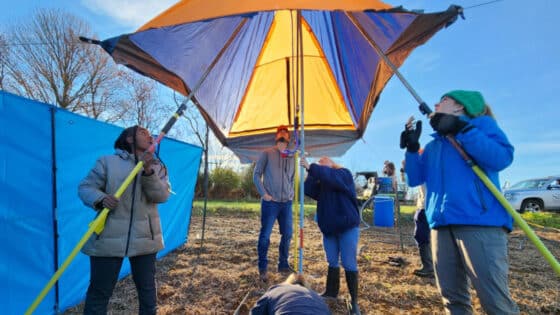Ensign, S.H., G.B. Noe, C.R. Hupp, and K.J. Skalak. 2015. Geophysical Research Letters 42(24):10,671–10,679.
Abstract
We measured rates of sediment, C, N, and P accumulation at four floodplain sites spanning the nontidal through oligohaline Choptank and Pocomoke Rivers, Maryland, USA. Ceramic tiles were used to collect sediment for a year and sediment cores were collected to derive decadal sedimentation rates using 137Cs. The results showed highest rates of short‐ and long‐term sediment, C, N, and P accumulation occurred in tidal freshwater forests at the head of tide on the Choptank and the oligohaline marsh of the Pocomoke River, and lowest rates occurred in the downstream tidal freshwater forests in both rivers. Presumably, watershed material was mostly trapped at the head of tide, and estuarine material was trapped in oligohaline marshes. This hydrologic transport bottleneck at the head of tide stores most available watershed sediment, C, N, and P creating a sediment shadow in lower tidal freshwater forests potentially limiting their resilience to sea level rise.


